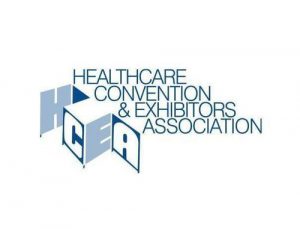Be a Leader Not a Manager

(and keep the bowling balls down the center of the lane)
This month’s Corner Office profile shines on Mike Pennington, CAE, CEcD, Executive Vice President, Healthcare Convention & Exhibitors Association (HCEA) which has over 350 company members.
![]()
Have the courage to be transparent. Sit down with all your stakeholders and make sure they understand the thought process that goes into your decisions.
Association models are increasingly moving from the dues model. You need a diversified portfolio of revenue streams to help you weather any storm.
Associations must continue to evolve as their industries and member demographics change.
“Atta-boys” and public recognition are key to maintaining the delicate balance between staff and volunteers.
Association Adviser: Mike, how long have you been at HCEA and what was your background before joining the organization?
Mike Pennington: I’ve been with HCEA since the beginning of 2014. I was brought in by an association management company (Kellen Company) to run HCEA and as well as the Retail Gift Card Association. Before that, I spent 10 years in economic development here in Georgia and am certified in economic development (CEcD).
AA: Tell us a little about HCEA?
 MP: We’re a trade association devoted to increasing the effectiveness and quality of healthcare conventions and exhibitions as an educational and marketing medium. We’ve been around since 1930 (originally as the Medical Exhibitors Association), and we’re the only exhibition association focused solely on healthcare. Our regular members are exhibition and meeting organizers at companies ranging from global healthcare giants like Pfizer, Merck and Johnson & Johnson to much smaller organizations. We also have associate members like the American Diabetes Association, supporting members, which are companies offering products and services to the medical convention and expo industry.
MP: We’re a trade association devoted to increasing the effectiveness and quality of healthcare conventions and exhibitions as an educational and marketing medium. We’ve been around since 1930 (originally as the Medical Exhibitors Association), and we’re the only exhibition association focused solely on healthcare. Our regular members are exhibition and meeting organizers at companies ranging from global healthcare giants like Pfizer, Merck and Johnson & Johnson to much smaller organizations. We also have associate members like the American Diabetes Association, supporting members, which are companies offering products and services to the medical convention and expo industry.
AA: Was it a tough transition from economic development to healthcare?
MP: Not really. HCEA was looking for a certain type of management style that I had and GSAE (Georgia Society of Association Executives) has been phenomenal for helpful helping me learn about association management and for finding peers to discuss tough issues with.
AA: So, how would you describe your leadership style?
MP: I try to be open and forthright. I don’t hide anything. Association leaders should be transparent and consistent. If you do a favor for one member, then you have to do that some favor for all members. It’s the only way to handle those gray areas we get into in association management.
AA: How so?
MP: For instance, suppose a [member] company asks if they can have a special group discount if they bring five people to a meeting you’re hosting. If that discount isn’t listed anywhere, then we’ll say “good idea,” but also make sure we advertise and promote that same discount to all of our members. It’s only fair and can help boost attendance. On the other hand, suppose a member asks for delayed billing since their travel budget has been cut until their next fiscal year. In that case I’d say “NO.” It doesn’t help us and it’s not the kind of favor we can offer across our membership
AA: How do those tough decisions tend to go over?
MP: I try to be a leader rather than a manager, whether it’s with our members, staff or volunteers. I want people to understand my thought process. Wherever possible, I sit down with them so they can understand the thinking behind my decision.
AA: How about motivating your staff and volunteers?
MP: Everyone likes to get some public recognition for their efforts. I give out lots of “atta-boys!” I want the members and board to know when something goes well and who is behind that success. Good leaders deflect attention away from themselves. Find a way to word it so that both groups [staff and volunteers] get credit for success and both groups have a role and responsibility to make things better if something didn’t go well.
AA: With all the mergers and other dramatic changes in the healthcare industry, has non-dues revenue taken on greater importance at HCEA?
MP: Yes. More and more association models are moving away from dues. You need a diversified portfolio of revenue streams to help you weather any storm. In addition to sponsorship, HCEA generates NDR via meetings, research and documents sold to the public. NDR is at least an 8 on a scale of 10 for our members. If we had this conversation a few years ago it would have been only a 6-1/2, maybe 7. Associations must continue to evolve as their industries and member demographics change.
AA: Does HCEA have any special initiatives for recruiting and retaining industry up-and-comers?
MP: Millennials don’t interact in the same way as other generations. I love their energy and ideas. They’re fantastic to work with. It’s just harder to get them to be joiners. They’re more likely to change industries and wonder where they belong—I know changed jobs several times in my 20s. But, once you get [young people] involved, the biggest challenge becomes harnessing their energy. You won’t find another group more committed to a cause.
AA: Every year our annual communications benchmarking study finds that live events among the most highly valued member benefits. Why do you think that is?
MP: You can’t replace the value of face-to-face interaction. There’s no other way to replace body language, eye contact and a firm handshake when you’re standing with someone you want to meet. Even our youngest members tell us that face-to-face is the best way to network and get business done.
AA: We understand HCEA has made a big push into the research arena.
MP: That’s right. We have an annual report on the top 50 healthcare conventions ranked by total attendance and professional attendance. You can find out which cities have the most meetings and the percentage of professionals vs. non-professionals at those meetings and much more. We also have the annual HCEA State of the Industry Report. It’s an annual benchmarking report available only to members that we’ve been doing for 15 to 20 years. We look at over 30,000 medical meetings over the past 10 years to measure trends in professional attendance, exhibit space relative to inflation, ROI based on meeting size, which specialties are growing the most and which cities are gaining or losing meetings. You can also ask us to do custom research for you on our medical meetings database. There’s a fee for that and it’s for members only.
AA: Impressive. How might an HCEA member use your reports?
MP: Well, regular members can use the benchmarking and trend analysis for planning, reports and uncovering opportunities. Associate members can benchmark their own events against industry averages and report back to their boards and committee on where they stand. Supporting members can use the data to support their clients’ strategies, forecast trends or to identify market opportunities.
AA: How can associations do a better job of measuring attendee and exhibitor satisfaction?
MP: You’ve got to ask them continuously, and do so in a number of ways. You can’t just hand out a piece of paper at the meeting. At the end of the year and after each of our major events we tally a Net Promoter Score not only for that event, but for HCEA overall. Just doing this once a year is not enough.
AA: Tell us more about handling the delicate balance between staff and volunteers?
MP: That’s why we created the “fine line” scenario. It’s about taking ownership when things don’t go well and sharing the praise when things do go well. You don’t want to create an organization in which staff gets blamed for everything that goes wrong and volunteers get all the credit when things go well. Communication is the key. You’ve got to talk about your expectations and how a particular task fits into the overall organizational goals. We’re also very clear about tasks and responsibilities. It’s not just saying that we need to grow membership. It’s saying, “You need to make 10 member-recruitment phone calls by the end of this month.”
AA: How about when you have a high-energy volunteer with their own agenda?
MP: That definitely happens. You may have a volunteer who truly wants to help the association, but they want to go about it their own way. You’ve got to keep them focused on the bowling pins at the end of the lane. Sometimes you and your staff have to act like bumpers to guide a volunteer back on track. The No. 1 thing is to help people find the right place [for a volunteer] to plug in to your association. For example, they may have a background in marketing, but if you put them into an area where they’re doing no marketing, then it’s not going to be a great fit for them (or you).

